Over Orchard
Orchard Road as we know it today is a far cry from its quiet beginnings as a plantation and residential area. Fiona Tan takes us back in time to revisit some of Orchard’s most distinctive landmarks.
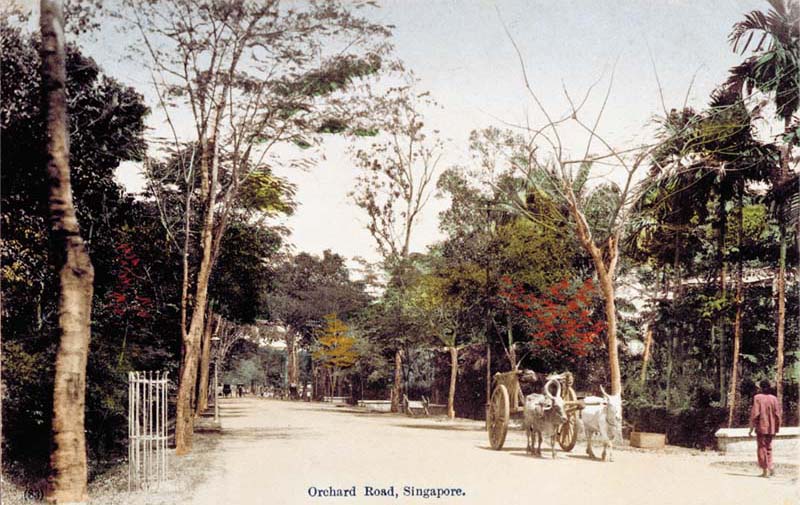 Orchard Road, named after the fruit orchards and nutmeg plantations that were wiped out by plant diseases in the late 1860s, continued to be lined by other surviving trees well into the early 1900s, as seen in this image. Courtesy of National Archives of Singapore.
Orchard Road, named after the fruit orchards and nutmeg plantations that were wiped out by plant diseases in the late 1860s, continued to be lined by other surviving trees well into the early 1900s, as seen in this image. Courtesy of National Archives of Singapore.“I think Orchard Road has been transformed into a very commercialised district. You really can’t find a place for some quietness… Of course in terms of shopping, I think it is now, even better than Oxford Street in London…
“Of course, it speaks well and good for our economy. But maybe a bit of our soul is lost in the name of progress. Perhaps, we cannot hold back progress. But perhaps, every time when we move forward, we have to think a bit of the past and try to maintain perhaps a resemblance of something of the past, not just this little bronze or plaque that you find on the pedestrian walkway, what tree or what it used to be… For example, as I said, Fitzpatrick’s [supermarket], the electronic door. Or perhaps, you know not many people knew Orchard Cinema was the first location of the first escalator in Singapore. That signifies the first step of progress, you see. I think these are moments that our people need to know. So that we can remember our past, and then appreciate today, and look forward to the changes ahead.”
– Tan Wee Him, who spent his formative years in the 1950s and 1960s in Orchard Road. Courtesy of an interview with the Oral History Centre.1
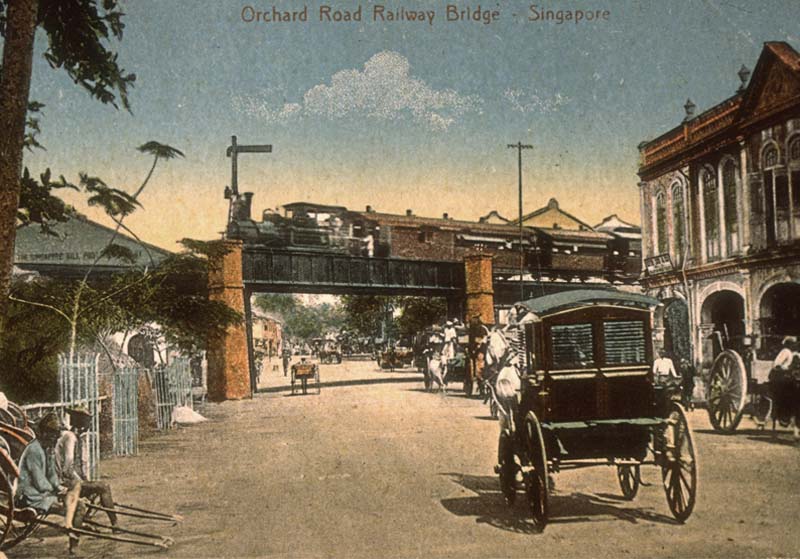 The overhead link between the two buildings that comprise Orchard Gateway today harkens back to the railway bridge (1903–1932) that was once found in Orchard Road. It is a reminder that we can find resemblances of the past in Orchard Road’s present if we look hard enough – perhaps some consolation to Tan Wee Him (see quote above) and his like-minded peers. Courtesy of National Archives of Singapore.
The overhead link between the two buildings that comprise Orchard Gateway today harkens back to the railway bridge (1903–1932) that was once found in Orchard Road. It is a reminder that we can find resemblances of the past in Orchard Road’s present if we look hard enough – perhaps some consolation to Tan Wee Him (see quote above) and his like-minded peers. Courtesy of National Archives of Singapore.It is hard to imagine the Orchard Road of yesteryear, as Tan Wee Him reminds us, when looking at the multiple transformations it has undergone over time. Originally a hilly suburban fringe sandwiched between the main commercial town area and Tanglin, Orchard Road is now arguably Singapore’s most iconic street. The bustling street lined with shiny megamalls is almost unrecognisable from the cluster of spice plantations and fruit orchards it was in the early 19th century, and later, for a large part of the 20th century, a suburban residential and commercial street lined with low-rise shophouses.
irememberOrchard is an exhibition that traces the transformation of Orchard Road through personal recollections and stories. Through archival photographs, oral history interviews from the Oral History Centre (OHC), memories collected by the Singapore Memory Project (SMP) as well as stories recounted in published sources and newspapers, the exhibition uncovers the many layers of Orchard Road through time and space. The exhibition, which runs from 23 October 2014 to April 2015 at the new library@Orchard at Orchard Gateway, is testimony that places are a tapestry of overlapping stories, with the past never fully fading away.
The specific stretch of Orchard Road covered in the aerial map (see below) – which is a composite of three separate aerial photographs taken in 1957 – stretches from Tanglin Circus on the bottom left and ends at the Young Men’s Christian Association building on the top right. This article only highlights 10 of the landmarks along Orchard Road. Visitors who want to enjoy the full experience should visit the exhibition, where a 3.5m by 3.5m version of the map, accompanying display panels and a Kinect station that allows visitors to download more information, will transport people back into the Orchard Road of times past.
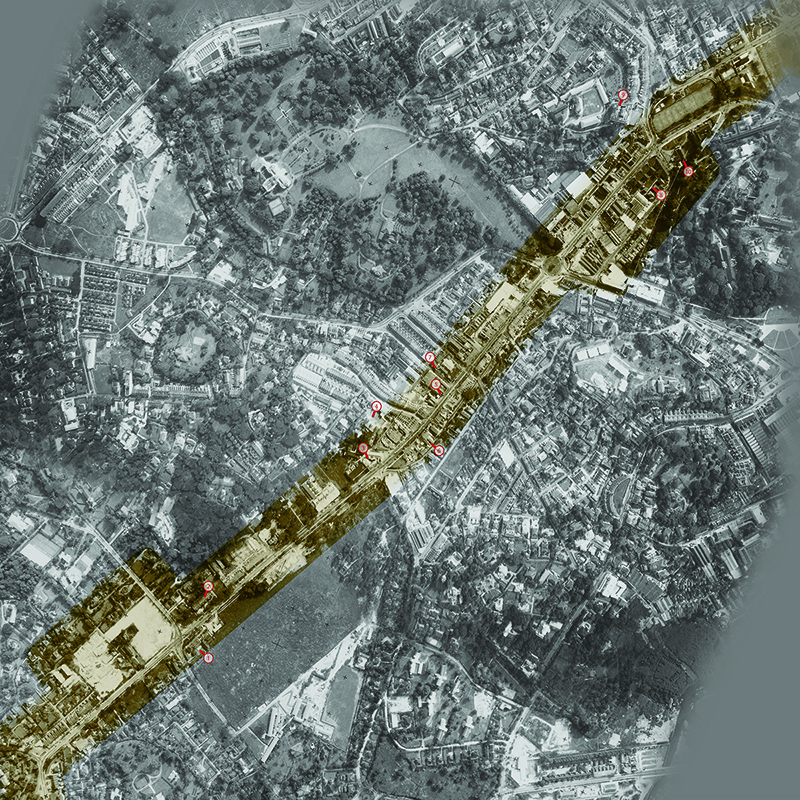 Note: This image is a composite of three aerial photographs of the South Central region taken by the Royal Air Force, dated 14 February 1957. Orchard Road – from Young Men’s Christian Association building (top right) to Tanglin Circus (bottom left) – is highlighted. Graphics with thanks to Kingsmen Pte Ltd.
Note: This image is a composite of three aerial photographs of the South Central region taken by the Royal Air Force, dated 14 February 1957. Orchard Road – from Young Men’s Christian Association building (top right) to Tanglin Circus (bottom left) – is highlighted. Graphics with thanks to Kingsmen Pte Ltd.
Landmarks identified based on 1957 Singapore Street Directory and Guide, (Singapore: Survey Dept, 1957) and Over Singapore: 50 years ago: An aerial view in the 1950s (Singapore: Editions Didier Millet in association with NAS, 2007) by Brenda Yeoh & Theresa Wong.
Legend: 1. Orchard Road Police Station; 2. C. K. Tang; 3. Heeren Building; 4. Singapore Chinese Girls’ School; 5. Cold Storage; 6. Pavilion; 7. Koek Road hawkers; 8. Amber Mansions; 9. Cathay Building; 10. Young Men’s Christian Association.
01 Orchard Road Police Station
Rebuilt in 1922 as quarters for policemen, the police station was a familiar landmark at the junction of Orchard Road, Scotts Road and Paterson Road. One interesting feature of the police station was its five chimneys at the rear of the building where the kitchen was once located.2 Orchard Road Police station was the ‘E’ Division Headquarters and thus responsible for a precinct with a population of approximately 230,000, comprising the areas of Bukit Batok, Bukit Timah, Tanglin, Ulu Pandan, Cairnhill, River Valley, Kim Seng, Havelock, Bukit Ho Swee, and parts of Boon Lay and Jurong. The building was demolished in 1982 and the site is now occupied by ION Orchard.3
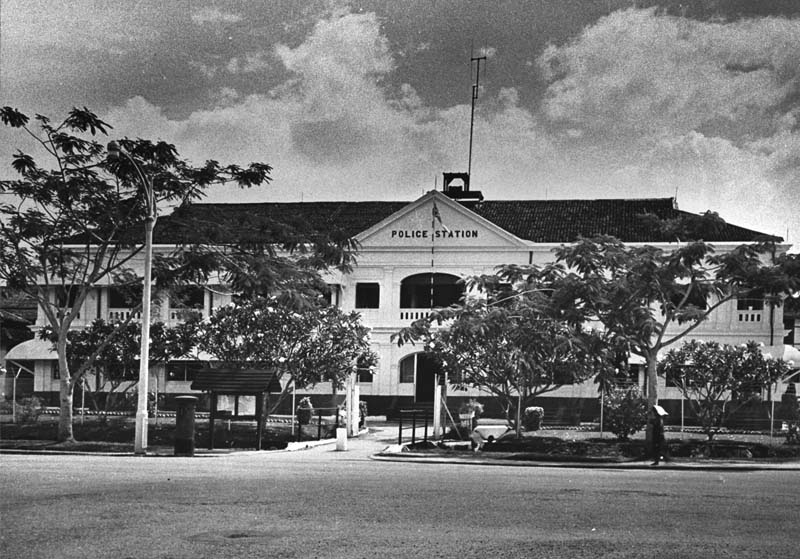 Orchard Road Police Station in the 1950s. Singapore Police Force collection, courtesy of National Archives of Singapore.
Orchard Road Police Station in the 1950s. Singapore Police Force collection, courtesy of National Archives of Singapore.
02 C. K. Tang
Now a household name, C. K. Tang started out in a nondescript shophouse in River Valley Road before moving to Orchard Road in 1958. Founder Tang Choon Keng ignored superstition and selected a location opposite the Tai San Ting Teochew cemetery, setting up what would become an Oriental landmark in Orchard Road.4 Designed by Ang Eng Leng, the building’s unique green tiled sloping roofs and red doors were said to be modelled after the Imperial Palace in the Forbidden City in Beijing.5 The green roof tiles were produced in Kuala Lumpur, while the carvings adorning the eaves were made by Teochew craftsmen in Singapore.6 Elements of this design still remain in the new Tangs building today and the adjacent Marriott Hotel (formerly Dynasty Hotel), both of which were completed in 1982.
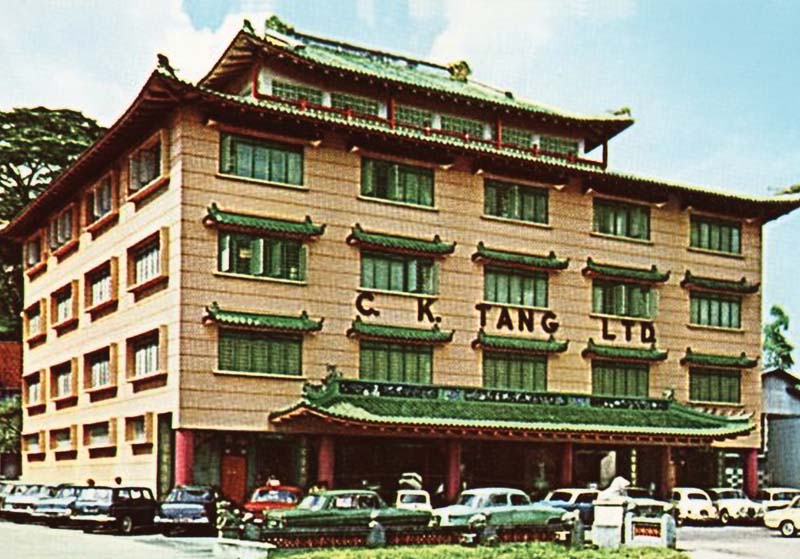 C. K. Tang in the 1960s. It was demolished in 1982, replaced with an enlarged Tangs and Dynasty Hotel (now Marriott Hotel).7 Courtesy of Bill Johnston.
C. K. Tang in the 1960s. It was demolished in 1982, replaced with an enlarged Tangs and Dynasty Hotel (now Marriott Hotel).7 Courtesy of Bill Johnston.
03 Heeren Building
Located at the junction of Orchard Road and Cairnhill Road, Heeren Building was designed by Keys and Dowdeswell, a Shanghai architectural firm also responsible for Capitol Cinema and Fullerton Hotel.8 A more modest three-storey building in the firm’s typical pseudo-Classical style, the Heeren featured long cantilevered balconies and a strong cornice as prominent elements, similar to Capitol Cinema.9 It was a familiar sight and home to many beloved establishments such as the Heeren beauty salon, Beethoven Music House and even a fur shop! Tan Wee Him recollects:
“Now, Heeren Building is another old colonial building, three or four storeys. Right at the corner is a barber shop, facing the traffic light junction. And that row, in the old Hereen Building, facing Orchard Road side, has a record shop. And at the corner is a first shop called Ali Joo, where every time people want to go Europe or England, the rich and famous will go there and buy their fur coat”.10
In 1990, the old Heeren Building was demolished for a road realignment project.11 In 1997, a $300-million 28-storey shopping and office complex known as the Heeren opened on part of the same site, taking over the row of pre-war shophouses linking the old Heeren Building to the former Yen San Building.12
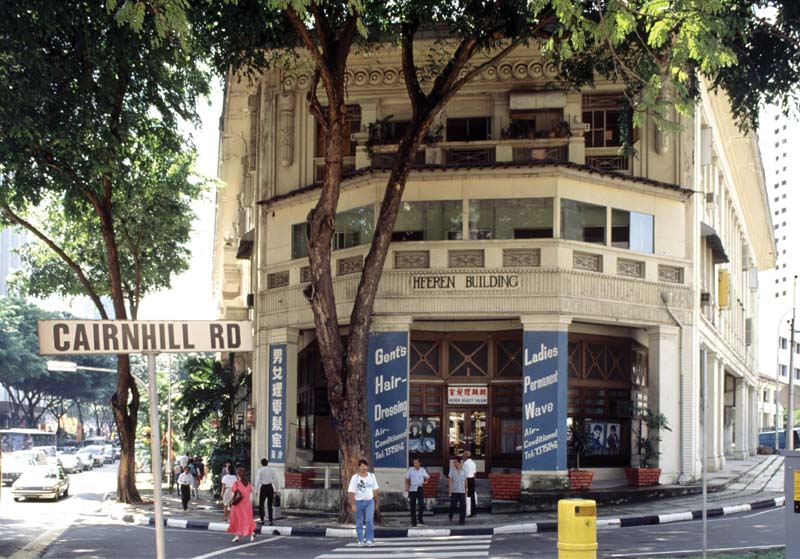 The distinctive architecture of the old Heeren Building as well as anchor tenants such as the beauty salon, which had been there since the pre-war period, were familiar sights along Orchard Road up till the 1980s. Singapore Tourist Promotion Board collection, courtesy of National Archives of Singapore.
The distinctive architecture of the old Heeren Building as well as anchor tenants such as the beauty salon, which had been there since the pre-war period, were familiar sights along Orchard Road up till the 1980s. Singapore Tourist Promotion Board collection, courtesy of National Archives of Singapore.
04 Singapore Chinese Girls’ School
The Singapore Chinese Girls’ School, formerly located at Hill Street, officially opened their premises at 37 Emerald Hill Road on 6 February 1926.13 The two-storey building – which cost 60,000 Straits dollars to build – offered 12 classrooms, an assembly hall, a staff room and principal’s office, with gardens planted with the fruit trees Orchard Road was known for.14 Started in 1899 by two prominent Straits-born Chinese community leaders – Lim Boon Keng and Song Ong Siang – it was the colony’s first English school for Chinese girls, who were taught subjects such as Malay, music, sewing and cookery.15 The school remained on Emerald Hill for 70 years before relocating to its present Dunearn Road site in 1994.16 In 1997, the school’s Emerald Hill building was added to the National Heritage’s Board’s list of significant historical sites.17
 Singapore Chinese Girls’ School students putting up a gymnastics display at the school’s Games Day in 1964, at their Emerald Hill premises. Yusof Ishak collection, courtesy of National Archives of Singapore.
Singapore Chinese Girls’ School students putting up a gymnastics display at the school’s Games Day in 1964, at their Emerald Hill premises. Yusof Ishak collection, courtesy of National Archives of Singapore.
05 Cold Storage
Cold Storage, a standalone building at the time, was a landmark in Orchard Road from 1905 onwards.18 In addition to catering to the local demand for frozen meat and imported groceries, Cold Storage was also known for its eateries, such as Magnolia Snack Bar. Tan Wee Him recalls his student years in the 1960s:
“In the good old days, the snack bar was a popular haunt for students… Magnolia Snack Bar is supposed to be the in-place where you go for a milkshake, or the popular fish and chips for $1.80… [The milkshake] would easily cost around 80 cents… they gave you a tall glass and it also come with the aluminium mixer that contains the other half of the milkshake. So you actually got something more than you bargained for, for maybe 80, 90 cents! … The snack bar was upfront. But Cold Storage has a restaurant on the second floor of the supermarket itself. And it’s called Salad Bowl”.19
The Salad Bowl was famous for its set lunches, with three courses going for under S$6 in the 1970s. Although the Cold Storage building was supplanted by Centrepoint in the 1980s,20 the supermarket chain now is a common sight in many malls (including Centrepoint), both along and beyond Orchard Road.
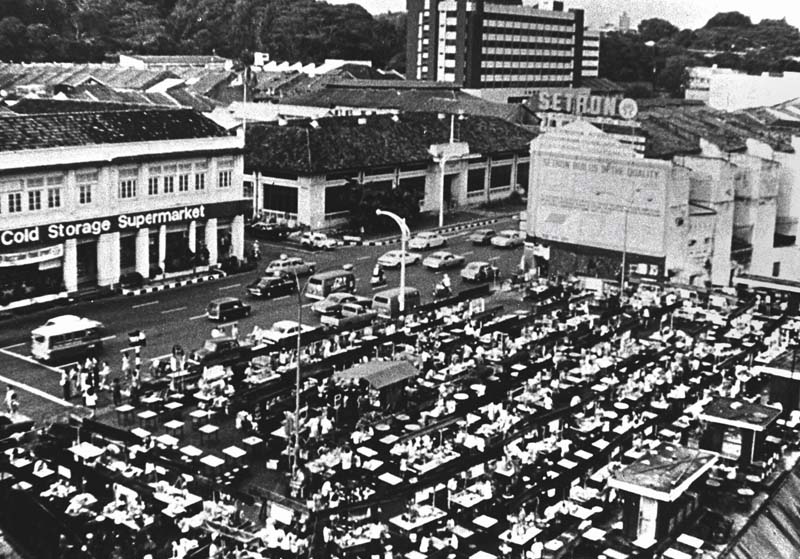 Cold Storage at the junction of Orchard Road and Koek Road, captured below in 1970. Just across the road was the Orchard Road carpark, which was a food haven by night for hawkers. Ministry of Information and the Arts collection, courtesy of National Archives of Singapore.
Cold Storage at the junction of Orchard Road and Koek Road, captured below in 1970. Just across the road was the Orchard Road carpark, which was a food haven by night for hawkers. Ministry of Information and the Arts collection, courtesy of National Archives of Singapore.
06 Pavilion
Formerly known as the Palladium (1913–1925), the Pavilion cinema was a pioneer in screening films along Orchard Road. Described as an architectural “reproduction of the Stoll houses in England”, its similarities with the grand theatres built by Sir Oswald Stoll in England in the early 20th century did not end there.21 The films screened at the Pavilion catered mainly to British tastes. As English expat George Yuille Caldwell, a frequent patron of the Pavilion in the late 1950s and early 1960s, recalls:
“On the whole, it was more convenient for the expats to go to the Pavilion Cinema… I think it had two angular pediments on the street front and probably a sign saying “Pavilion Cinema”… [T]here was a restaurant there as well, we used to have dinner there. You either have fish and chips or you had steak and chips, a prawn cocktail for starters and probably an ice-cream and chocolate sauce. And then you just walked straight through the door, from the restaurant, into the circle of the cinema. And you’d take your whiskey with you. And then halfway through the film, the film would stop, and you would go out, get another whiskey, and bring it back into the cinema with you. And then the film would start again…”22
The building was demolished in 1969 and replaced with Phoenix Hotel and Specialists’ Shopping Centre.23 Both buildings have since been demolished and replaced by Orchard Gateway.
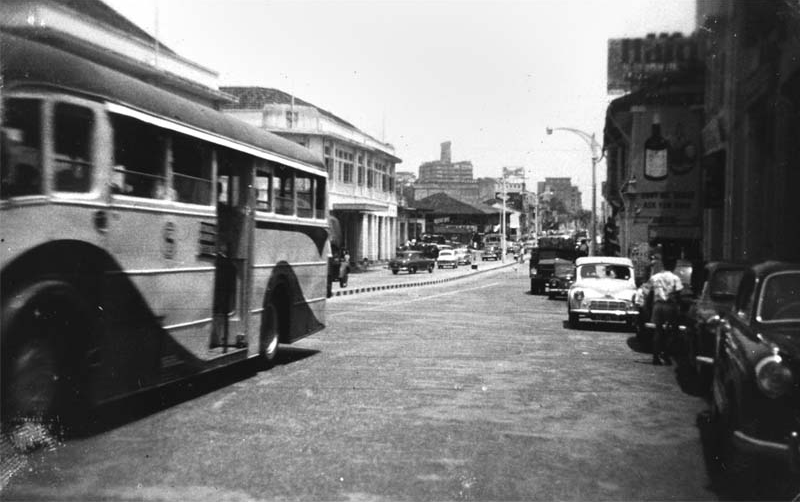 Such was the view that greeted the person who stepped out of the Pavilion cinema and looked towards Cold Storage (the building on left) in 1957. William Wee collection, courtesy of National Archives of Singapore.
Such was the view that greeted the person who stepped out of the Pavilion cinema and looked towards Cold Storage (the building on left) in 1957. William Wee collection, courtesy of National Archives of Singapore.
07 Koek Road Hawkers
Located in the vicinity of Orchard Road Market, Koek Road and Koek Lane were home to many hawkers and the site of many mouth-watering memories for people who remember this street food haunt. Pakirisamy Rajagopal fondly recollects the variety of food available there in the 1950s:
“So the favourite joint that I used to go to is Koek Road where you have your kolo mee, your char kway teow, your mee goreng, your soup kambing, name whatever you want. The roadside stalls will open up after 6pm. Whereas the coffeeshop stalls are open from morning to nighttime…
“And in the same stretch of the old dirty looking coffee shop, there was a dirty little monsoon drain with a platform over it, 30 huge rats running around. The Teck Kee Pau, which is now in Bukit Timah Road, originated from there…
“The kway teow man, the hokkien mee chap, [wore] just a singlet. [He] would be having a little towel… – I remember the white towel…[with] the name Good Morning – he would have it round his neck; he would sit down and fry the hokkien mee. His was the best hokkien mee of the whole of Singapore at that time”.24
As early as 1933, Municipal Commissioners had prohibited itinerant hawkers from overcrowding Koek Road and Koek Lane.25 However, patrons were spoilt for choice and often unconcerned with the finer points of hawker licensing and other legal details, despite the occasional complaint of road obstruction.26 That compromise lasted till the mid-1970s when the Koek Road and Koek Lane hawkers, itinerant or otherwise, were relocated, some to the new Cuppage Centre.27
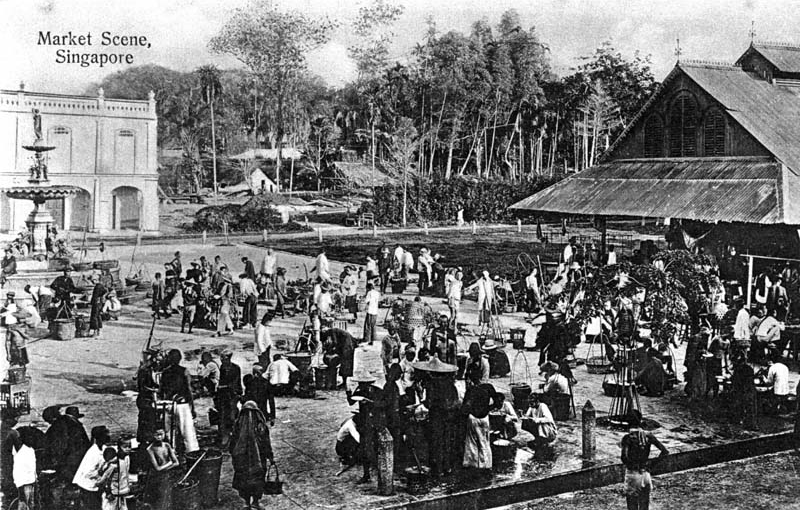 Itinerant hawkers at what was known as “Koek’s Bazaar” in 1905. Koek Road and Koek Lane became a favourite haunt for foodies in search of Singapore’s hawker delights. Courtesy of National Archives of Singapore.
Itinerant hawkers at what was known as “Koek’s Bazaar” in 1905. Koek Road and Koek Lane became a favourite haunt for foodies in search of Singapore’s hawker delights. Courtesy of National Archives of Singapore.
08 Amber Mansions
A mixed-use development that combined shops and residences in a large complex, Amber Mansions was developed in 1922 by the prominent Jewish businessman, J. A. Elias.28 Forming what notable architect Tay Kheng Soon called a “design trinity” with MacDonald House and the old Malayan Motors Showroom,29 Amber Mansions was designed by Swan and Maclaren in a decorative style typical of Art Deco buildings in the 1920s.30 Its distinctive arcaded front adorned the junction of Orchard Road and Penang Lane for more than 60 years until it was demolished to make way for Dhoby Ghaut MRT station in 1984.31
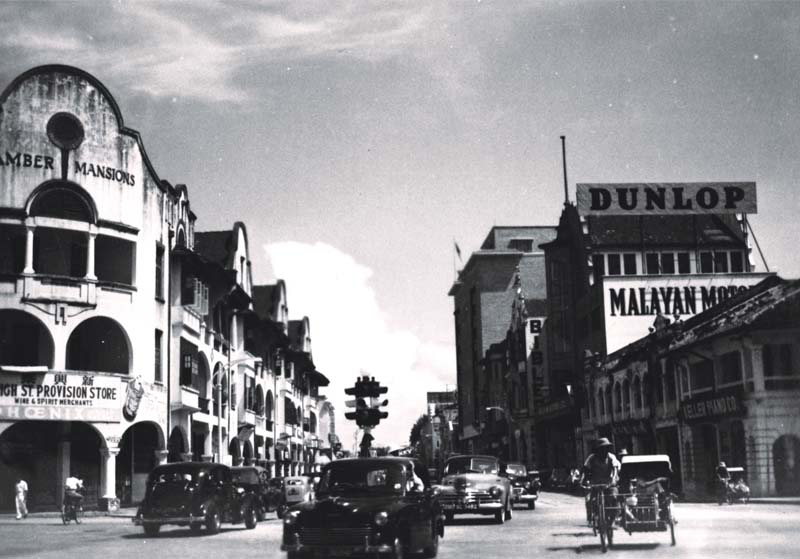 Home to tenants such as the Municipal Gas Department, the British Council, High Street Provision Store (pictured here c. 1960s), University Bookstore, Fosters steakhouse and City Development Limited,32 Amber Mansions is a reminder of Orchard Road’s early 20th century incarnation as a suburban residential area. R. Browne collection, courtesy of National Archives of Singapore.
Home to tenants such as the Municipal Gas Department, the British Council, High Street Provision Store (pictured here c. 1960s), University Bookstore, Fosters steakhouse and City Development Limited,32 Amber Mansions is a reminder of Orchard Road’s early 20th century incarnation as a suburban residential area. R. Browne collection, courtesy of National Archives of Singapore.
09 Cathay Building
Designed by Frank Brewer, Cathay Building stood out at the foot of Mount Sophia. Comprising residences, a hotel, restaurant and cinema, the 16-storey Cathay Building was the first skyscraper and the tallest building in Singapore until 1954.33 The cinema opened on 3 October 1939, while the other wings followed in 1941.34 In the immediate post-war years, this was where Cathay Organisation’s director Loke Wan Tho rebuilt his film empire during what turned out to be the golden years of Singapore film production and distribution, and Cathay Cinema became the filmgoer’s cinema of choice.35 Cathay Building was demolished in 2003, replaced with a new seven-storey complex with cinemas and retail outlets; its façade, however, was maintained as it was gazetted in February 2003.36 The Cathay, as it is now known, re-opened in 2006.37
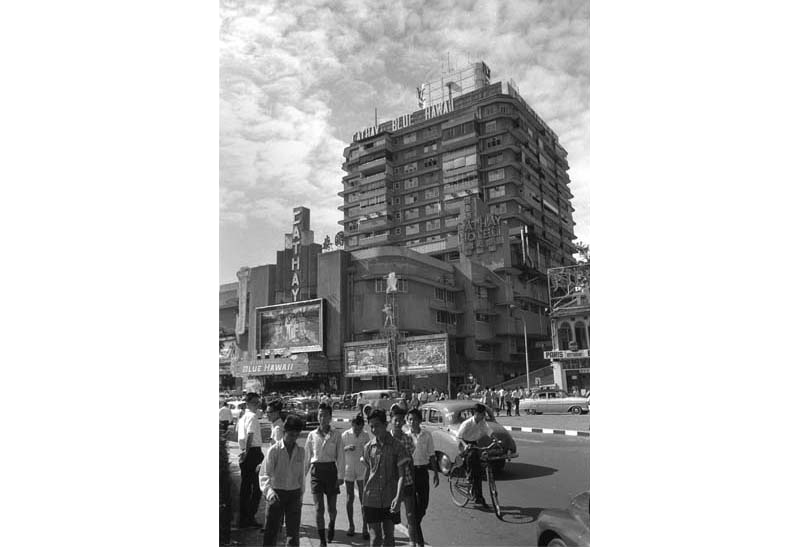 Cathay was a popular haunt for filmgoers, offering both European blockbusters and local productions in the 1950s and 1960s. Courtesy of National Archives of Singapore.
Cathay was a popular haunt for filmgoers, offering both European blockbusters and local productions in the 1950s and 1960s. Courtesy of National Archives of Singapore.
10 Young Men’s Christian Association
Founded by Robert Pringle in 1903, the Young Men’s Christian Association (YMCA) was initially located within Whitfield’s Guest House (also known as Zetland House) on Armenian Street. In 1911, after securing a 999-year lease from the colonial government and two years of construction, the iconic red-and-white brick building opened.38 More than just an affordable hostel, the YMCA also actively organised a wide range of sports and recreational activities, programmes and educational and enhancement classes for all age groups under its roof.39 In 1982, the building was demolished, making way for a nine-storey modern facility called YMCA International House.40
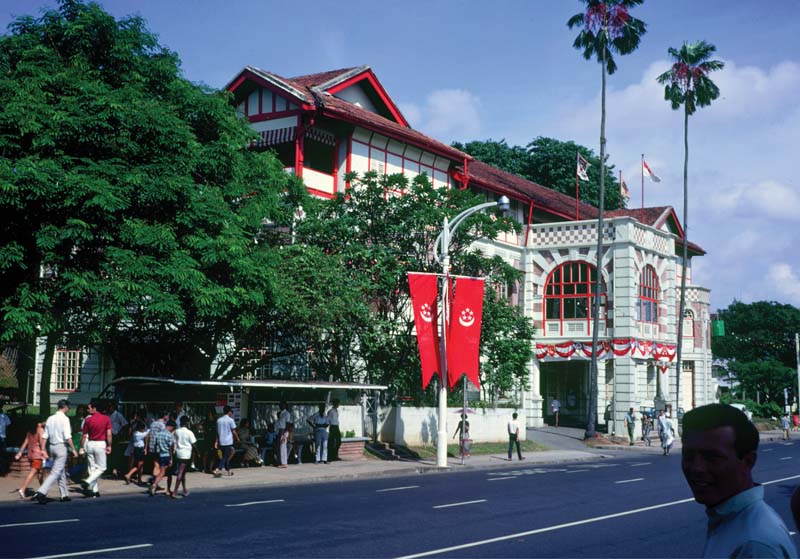 The Edwardian-style building fitted with arched windows and a double-decker portico – featured here with matching red-and-white national day decorations in the late 1960s – was a familiar sight at 1 Orchard Road until it was demolished in 1982. John C. Young collection, courtesy of National Archives of Singapore.
The Edwardian-style building fitted with arched windows and a double-decker portico – featured here with matching red-and-white national day decorations in the late 1960s – was a familiar sight at 1 Orchard Road until it was demolished in 1982. John C. Young collection, courtesy of National Archives of Singapore.
NAS’ Aerial Photographs Collection
NAS has a collection of over 45,000 aerial photographs taken from 1946 to 1968, publicly accessible from its Archives Online portal. Taken by the Royal Air Force, these aerial photographs were once an important source of reconnaissance data and were used to create maps by photogrammetric methods. Capturing the period of drastic landscape changes that accompanied the political changes in the 1950s and 1960s, the aerial photographs offer a bird’s eye view of Singapore.
Oral History Centre (OHC)
Set up in 1979, the Oral History Centre records, documents, preserves and disseminates oral history interviews of national and historical significance. Using a rigorous methodology and approach towards interviewing, the oral history collection not only provides researchers with a detailed look into an individual’s life, but also allows rich insights into social, political and economic circumstances. Comprising more than 20,000 interview hours from over 3,600 individuals, the collection allows us to listen firsthand to the voices of these eyewitnesses of history.
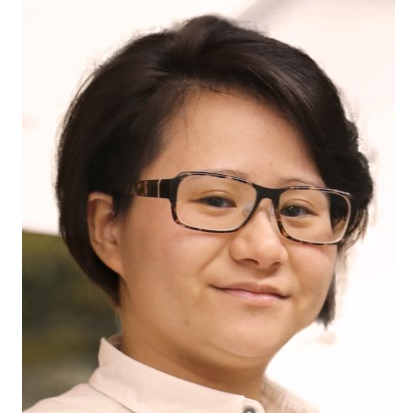
Fiona Tan is an Assistant Archivist (Outreach) with the National Archives of Singapore. Fairly new to the occupation but not the institution, she firmly believes that archival research often yields unexpected finds for those who persevere. She continues to promote the quirky and curious nature of the archives through her work. She thanks Eric Chin, Irene Lim, June Pok, Janelle Chua, Denise Ng and Noor Fadilah Yusof for their inputs to this article.
REFERENCES
23-storey hotel going up on old Pavilion site. (1969, July 22). The Straits Times, p. 9. Retrieved from NewspaperSG.
A hawkers’ paradise. (1965, February 2). The Straits Times, p. 10. Retrieved from NewspaperSG.
An old Singapore landmark to be replaced. (1959, December 9). The Straits Times, p. 7. Retrieved from NewspaperSG.
Ang, P.H. (1983, July 6). Everything must go. Singapore Monitor, p. 6. Retrieved from NewspaperSG.
Ang, A. (1990, February 17). Heeren Building has to make way for road project. The Straits Times, p. 22. Retrieved from NewspaperSG.
Babas who did much for education. (1983, November 13). The Straits Times, p. 21. Retrieved from NewspaperSG.
Boland, G. (1958, October 20). Enterprise with name famous the world over. The Singapore Free Press, p. 1. Retrieved from NewspaperSG.
Braddell, R. (1947, April 19). Memories of ©16 Singapore: Fun and games in sticky colonial society. The Straits Times, p. 8. Retrieved from NewspaperSG.
Check in, check out. (2005, July 16). The Straits Times, p. 5. Retrieved from NewspaperSG.
Chew, H.M. (Interviewer). (2006, June 9). Oral history interview with Tan Wee Him [Transcript of MP3 recording no. 003058/07/02, pp. 31–64]. Retrieved from National Archives of Singapore.
Cold storage depot. (1905, April 6). The Straits Times, p. 5. Retrieved from NewspaperSG.
Cold storage plans to move out to Singapore. (1982, November 26). The Straits Times, p. 22. Retrieved from NewspaperSG.
Cuppage Road stalls open in August. (1978, June 29). The Straits Times, p. 6. Retrieved from NewspaperSG.
Davidson, J. (2010). Singapore shophouse (p. 142). Singapore: Talisman. (Call no.: RSING 720.95957 DAV)
Death of Mr R.A.J. Bidwell. (1918, April 11). The Singapore Free Press and Mercantile Advertiser, p. 235. Retrieved from NewspaperSG.
Down goes Heeren Building. (1990, March 9). The Straits Times, p. 9. Retrieved from NewspaperSG.
Edwards, n., & Keys, P. (1988). Singapore: A guide to buildings, street, places (p. 220). Singapore: Times Books International. (Call no.: RSING 915.957 EDW)
Flower, R. (2002). The Y: First 100 years in Singapore, 1902–2002 (pp. 6–8). Singapore: YMCA. (Call no.: RSING q267.395957 FLO)
Fong, V. (1984, June 3). The ‘Y’ over the years. Singapore Monitor, p. 38. Retrieved from NewspaperSG
Guevarra, V. (2000, October 5). Landmark Cockpit Hotel to be a thing of the past soon. The Straits Times, p. 32. Retrieved from NewspaperSG.
Koek Lane food stalls move out. (1976, October 5). The Straits Times, p. 15. Retrieved from NewspaperSG.
Keok Road is now No.1 favourite among the night-out eater. (1960, July 19). The Singapore Free Press, p. 4. Retrieved from NewspaperSG.
Koh, E. (1991, February 27). Cockpit to buy over Salvation Army HQ. The Business Times, p.1 Retrieved from NewspaperSG.
Lee, E. (1990). Historic buildings of Singapore. Singapore: Preservation of Monuments Board. (Call no.: RSING 720.95957 LEE)
Lee, K.L. (2002, October 7). Cockpit site was once Kempeitai station. The Straits Times, p. 16. Retrieved from NewspaperSG.
Lim, B. (Interviewer). (2012, November 1). Oral history interview with George Yuille Caldwell [MP3 recording no. 003776/38//15]. Retrieved from NewspaperSG.
Lim, J. (Interviewer). (2002, August 13). Oral history interview with Pakirisamy Rajagopal [MP3 recording no. 002599/08//02]. Retrieved from National Archives of Singapore website.
Lim, K.T., & Yiu, T.C. (1991). Cathay: 55 years of cinema. Singapore: Landmark Books for Meileen Choo. (Call no.: RSING 791.43095957 LIM)
Lim, P.H., & Chong, G.P. (1982, March 7). New era coming to C K Tang. The Straits Times, p. 9. Retrieved from NewspaperSG.
Lyne, R., et al. (1992). The YMCA of Singapore: 90 years of service to the community. Singapore: YMCA. (Call no.: RSING 267.395957 YMC)
Modern entertainment: The Palladium picture palace. (1913, December 24). The Singapore Free Press, p. 12. Retrieved from NewspaperSG.
Mok, S.P. (1971, July 9). Cockpit’s $10 million extension to open in September. The Straits Times, p. 16. Retrieved from NewspaperSG.
Municipal action. (1933, March 31). The Straits Times, p. 6. Retrieved from NewspaperSG.
National Heritage Board. (2015, December 7). Former Cathay Building (now The Cathay). Retrieved from Roots.sg website.
National Heritage Board. (2015, December 7). Goodwood Park Hotel (Tower Block). Retrieved from Roots.sg website.
Tan, J.H.S. (2016). Goodwood Park Hotel. Retrieved from Singapore Infopedia, National Library Singapore.
‘New look’ plan by URA for Orchard Road. (1978, December 2). The Straits Times, p. 13. Retrieved from NewspaperSG.
Ooi, Y.L. (1999). Pieces of jade and gold: An anecdotal history of the Singapore Chinese Girls’ School 1899–1999. Singapore: Singapore Chinese Girls’ School. (Call no.; RCLOS 373.5957 OOI)
Our lost treasures. (1990, April 1). The Straits Times, p. 2. Retrieved from NewspaperSG.
Peer, M.A. (2002). Policing Singapore in the 19th and 20th centuries. Singapore: Singapore Police Force. (Call no.: RSING 363.2095957 PEE)
Pioneers of Singapore: Dr Lim Boon Keng (1869–1957). (1986, May 25). The Straits Times, p. 12. Retrieved from NewspaperSG.
Quek, C. (2005, February 3). Building stability. The Business Times, p. 24. Retrieved from NewspaperSG.
Showtime. (2006, March 21). The Straits Times, p. 10. Retrieved from NewspaperSG.
Singapore Building Corp.: Chairman explains position of Amber Mansions. (1922, December 14). The Straits Times, p. 14. Retrieved from NewspaperSG.
Singapore Chinese Girls’ School. (2020). SCGS Milestones. Retrieved from Singapore Chinese Girls’ School website.
Singapore street directory and guide. (1957). Singapore: Survey Dept. (Not available in NLB’s holdings)
Tan, J. (1982, July 10). Demolishers catch up with police station. The Straits Times, p. 12. Retrieved from NewspaperSG.
Tan, L. (1982, May 22). The Tang Dynasty. The Straits Times, p. 1. Retrieved from NewspaperSG.
Toh, E. (1991, July 10). Owner of Heeren site gets nod to build $300m complex. The Straits Times, p. 36. Retrieved from NewspaperSG.
Tyers, R., & Siow, J.H. (1993). Ray Tyers’ Singapore: Then & now. Singapore: Landmark Books. (Call no.: RSING 959.57 TYE)
Waiting for the beat. (1997, April 17). The Business Times, p. 1. Retrieved from NewspaperSG.
Wan, M.H., & Lau, J. (2009). Heritage places of Singapore. Singapore Marshall Cavendish International. (Call no.: RSING 959.57 WAN)
Yeoh, B., & Wong, T. (2007). Over Singapore: 50 years ago: An aerial view in the 1950s. Singapore: Editions Didier Millet in association with NAS. (Call no.: RSING 779.995957 YEO)
NOTES
-
Chew, H.M. (Interviewer). (2006, June 9). Oral history interview with Tan Wee Him [Transcript of MP3 recording no. 003058/07/02, pp. 31–64]. Retrieved from National Archives of Singapore. ↩
-
Tan, J. (1982, July 10). Demolishers catch up with police station. The Straits Times, p. 12. Retrieved from NewspaperSG. ↩
-
The Straits Times, 10 Jul 1982, p. 12; Peer, M.A. (2002). Policing Singapore in the 19th and 20th centuries (p. 109). Singapore: Singapore Police Force. (Call no.: RSING 363.2095957 PEE) ↩
-
Tan, L. (1982, May 22). The Tang Dynasty. The Straits Times, p. 1. Retrieved from NewspaperSG. ↩
-
Boland, G. (1958, October 20). Enterprise with name famous the world over. The Singapore Free Press, p. 1. Retrieved from NewspaperSG. ↩
-
The Straits Times, 22 May 1982, p. 1. ↩
-
Lim, P.H., & Chong, G.P. (1982, March 7). New era coming to C K Tang. The Straits Times, p. 9. Retrieved from NewspaperSG. ↩
-
Down goes Heeren Building. (1990, March 9). The Straits Times, p. 9. Retrieved from NewspaperSG. ↩
-
Edwards, n., & Keys, P. (1988). Singapore: A guide to buildings, street, places (p. 220). Singapore: Times Books International. (Call no.: RSING 915.957 EDW) ↩
-
Chew, H.M. (Interviewer). (2006, June 9). Oral history interview with Tan Wee Him [Transcript of MP3 recording no. 003058/07/01, pp. 1–30]. Retrieved from National Archives of Singapore ↩
-
Ang, A. (1990, February 17). Heeren Building has to make way for road project. The Straits Times, p. 22. Retrieved from NewspaperSG. ↩
-
Toh, E. (1991, July 10). Owner of Heeren site gets nod to build $300m complex. The Straits Times, p. 36; Waiting for the beat. (1997, April 17). The Business Times, p. 1. Retrieved from NewspaperSG. ↩
-
Singapore Chinese Girls’ School. (2020). SCGS Milestones. Retrieved from Singapore Chinese Girls’ School website. ↩
-
Ooi, Y.L. (1999). Pieces of jade and gold: An anecdotal history of the Singapore Chinese Girls’ School 1899–1999 (pp. 15, 21). Singapore: Singapore Chinese Girls’ School. (Call no.; RCLOS 373.5957 OOI) ↩
-
Pioneers of Singapore: Dr Lim Boon Keng (1869–1957). (1986, May 25). The Straits Times, p. 12; Babas who did much for education. (1983, November 13). The Straits Times, p. 21. Retrieved from NewspaperSG. ↩
-
Cold storage depot. (1905, April 6). The Straits Times, p. 5. Retrieved from NewspaperSG. ↩
-
Oral history interview with Tan Wee Him, 9 Jun 2006. ↩
-
Cold storage plans to move out to Singapore. (1982, November 26). The Straits Times, p. 22. Retrieved from NewspaperSG. ↩
-
Modern entertainment: The Palladium picture palace. (1913, December 24). The Singapore Free Press, p. 12. Retrieved from NewspaperSG. ↩
-
Lim, B. (Interviewer). (2012, November 1). Oral history interview with George Yuille Caldwell [MP3 recording no. 003776/38//15]. Retrieved from NewspaperSG. ↩
-
23-storey hotel going up on old Pavilion site. (1969, July 22). The Straits Times, p. 9. Retrieved from NewspaperSG. ↩
-
Lim, J. (Interviewer). (2002, August 13). Oral history interview with Pakirisamy Rajagopal [MP3 recording no. 002599/08//02]. Retrieved from National Archives of Singapore website. ↩
-
Municipal action. (1933, March 31). The Straits Times, p. 6. Retrieved from NewspaperSG. ↩
-
Keok Road is now No.1 favourite among the night-out eater. (1960, July 19). The Singapore Free Press, p. 4; A hawkers’ paradise. (1965, February 2). The Straits Times, p. 10. Retrieved from NewspaperSG. ↩
-
Koek Lane food stalls move out. (1976, October 5). The Straits Times, p. 15; Cuppage Road stalls open in August. (1978, June 29). The Straits Times, p. 6; ‘New look’ plan by URA for Orchard Road. (1978, December 2). The Straits Times, p. 13. Retrieved from NewspaperSG. ↩
-
Singapore Building Corp.: Chairman explains position of Amber Mansions. (1922, December 14). The Straits Times, p. 14. Retrieved from NewspaperSG. ↩
-
The Straits Times, 1 Apr 1990, p. 2. ↩
-
Davidson, J. (2010). Singapore shophouse (p. 142). Singapore: Talisman. (Call no.: RSING 720.95957 DAV) ↩
-
Ang, P.H. (1983, July 6). Everything must go. Singapore Monitor, p. 6. Retrieved from NewspaperSG. ↩
-
Our lost treasures. (1990, April 1). The Straits Times, p. 2; Quek, C. (2005, February 3). Building stability. The Business Times, p. 24. Retrieved from NewspaperSG. ↩
-
Tyers, R., & Siow, J.H. (1993). Ray Tyers’ Singapore: Then & now (p. 67). Singapore: Landmark Books. (Call no.: RSING 959.57 TYE) ↩
-
Lim, K.T., & Yiu, T.C. (1991). Cathay: 55 years of cinema (p. 98). Singapore: Landmark Books for Meileen Choo. (Call no.: RSING 791.43095957 LIM) ↩
-
National Heritage Board. (2015, December 7). Former Cathay Building (now The Cathay). Retrieved from Roots.sg website. ↩
-
Showtime. (2006, March 21). The Straits Times, p. 10. Retrieved from NewspaperSG. ↩
-
Flower, R. (2002). The Y: First 100 years in Singapore, 1902–2002 (pp. 6–8). Singapore: YMCA. (Call no.: RSING q267.395957 FLO); Fong, V. (1984, June 3). The ‘Y’ over the years. Singapore Monitor, p. 38. Retrieved from NewspaperSG. ↩
-
Lyne, R., et al. (1992). The YMCA of Singapore: 90 years of service to the community (p. 59). Singapore: YMCA. (Call no.: RSING 267.395957 YMC) ↩

